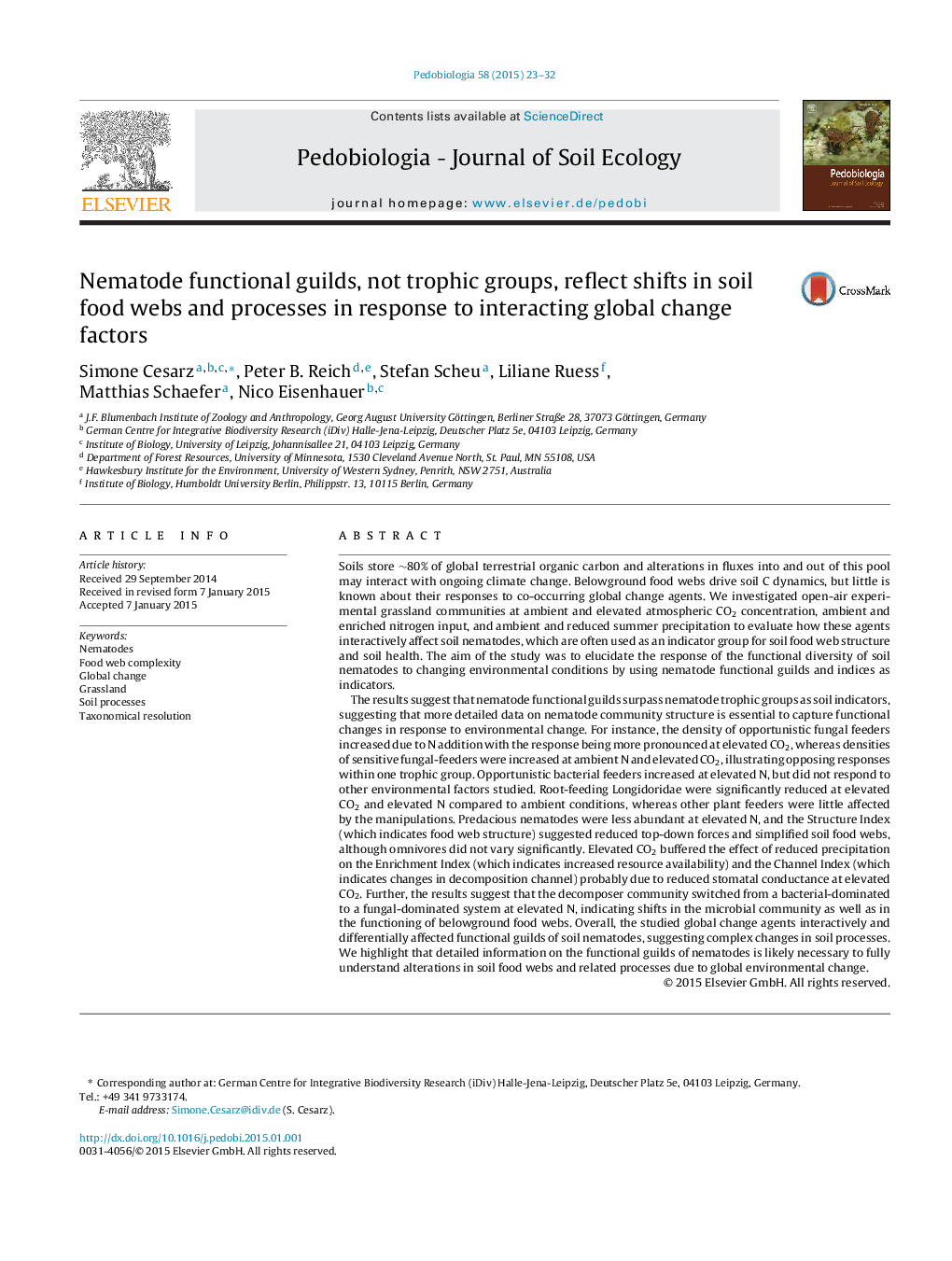| کد مقاله | کد نشریه | سال انتشار | مقاله انگلیسی | نسخه تمام متن |
|---|---|---|---|---|
| 2061019 | 1076428 | 2015 | 10 صفحه PDF | دانلود رایگان |
Soils store ∼80% of global terrestrial organic carbon and alterations in fluxes into and out of this pool may interact with ongoing climate change. Belowground food webs drive soil C dynamics, but little is known about their responses to co-occurring global change agents. We investigated open-air experimental grassland communities at ambient and elevated atmospheric CO2 concentration, ambient and enriched nitrogen input, and ambient and reduced summer precipitation to evaluate how these agents interactively affect soil nematodes, which are often used as an indicator group for soil food web structure and soil health. The aim of the study was to elucidate the response of the functional diversity of soil nematodes to changing environmental conditions by using nematode functional guilds and indices as indicators.The results suggest that nematode functional guilds surpass nematode trophic groups as soil indicators, suggesting that more detailed data on nematode community structure is essential to capture functional changes in response to environmental change. For instance, the density of opportunistic fungal feeders increased due to N addition with the response being more pronounced at elevated CO2, whereas densities of sensitive fungal-feeders were increased at ambient N and elevated CO2, illustrating opposing responses within one trophic group. Opportunistic bacterial feeders increased at elevated N, but did not respond to other environmental factors studied. Root-feeding Longidoridae were significantly reduced at elevated CO2 and elevated N compared to ambient conditions, whereas other plant feeders were little affected by the manipulations. Predacious nematodes were less abundant at elevated N, and the Structure Index (which indicates food web structure) suggested reduced top-down forces and simplified soil food webs, although omnivores did not vary significantly. Elevated CO2 buffered the effect of reduced precipitation on the Enrichment Index (which indicates increased resource availability) and the Channel Index (which indicates changes in decomposition channel) probably due to reduced stomatal conductance at elevated CO2. Further, the results suggest that the decomposer community switched from a bacterial-dominated to a fungal-dominated system at elevated N, indicating shifts in the microbial community as well as in the functioning of belowground food webs. Overall, the studied global change agents interactively and differentially affected functional guilds of soil nematodes, suggesting complex changes in soil processes. We highlight that detailed information on the functional guilds of nematodes is likely necessary to fully understand alterations in soil food webs and related processes due to global environmental change.
Journal: Pedobiologia - Volume 58, Issue 1, January 2015, Pages 23–32
